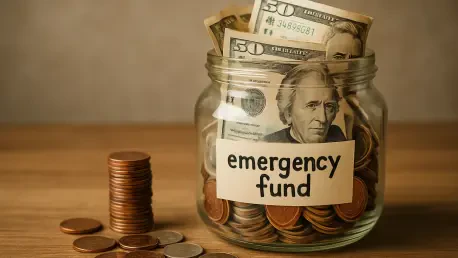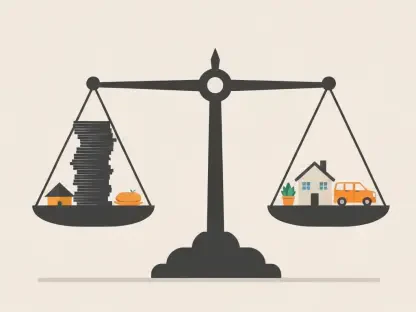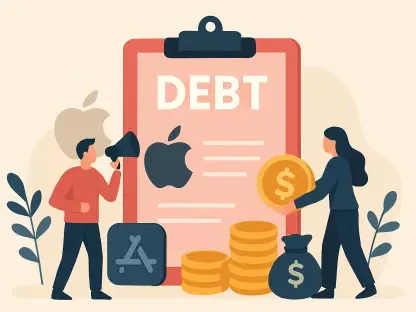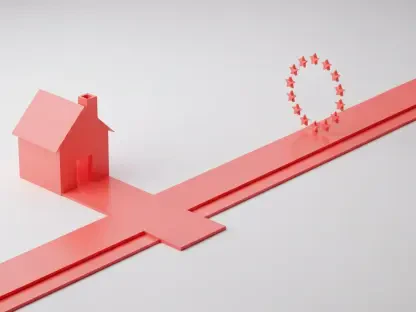Imagine a sudden car breakdown on a busy highway, a stolen laptop just before a critical deadline, or an unexpected trip to urgent care that leaves a dent in your budget, and you realize these unpredictable emergencies are a part of life that can bring overwhelming financial strain without proper preparation. Fortunately, establishing an emergency fund offers a practical solution to weather such storms. Financial experts stress that having a safety net is vital, particularly for those managing tight budgets or existing debt. This fund not only provides a buffer against unforeseen expenses but also helps avoid sinking deeper into debt during a crisis. By following actionable advice from certified professionals, anyone can start building this essential financial cushion, regardless of their current circumstances. The process may seem intimidating at first, but breaking it down into manageable steps can make it achievable and even empowering over time. Let’s explore how to create and maintain an emergency fund with straightforward, expert-backed strategies.
1. Start with Manageable Targets
Setting out to save three to six months’ worth of expenses can feel like an insurmountable task, especially for those with limited income or pressing financial obligations. A more approachable starting point is to aim for a smaller, realistic goal, such as $1,000, before gradually increasing the target to cover one, three, or even six months of expenses. Experts suggest that even modest contributions, like setting aside $20 from each paycheck, can accumulate significantly over time. The key is consistency, and keeping these savings in a separate account is crucial to avoid mingling them with everyday funds. Opting for a high-yield savings account can also provide the added benefit of earning higher interest compared to traditional accounts, helping the fund grow faster without extra effort. This initial step ensures that the process feels less daunting and builds confidence in one’s ability to save.
Progressing from a small goal to larger milestones requires patience and a clear focus on financial priorities. For many, the act of saving even a small amount regularly can shift mindsets from scarcity to security. It’s important to recognize that this isn’t a race; every dollar saved moves the needle closer to a robust safety net. Financial planners often advise against comparing one’s progress to others, as personal circumstances dictate the pace of savings. Using a dedicated account also creates a mental barrier, reducing the likelihood of dipping into the fund for non-emergencies. As the balance grows, so does the sense of control over unexpected challenges. This method of starting small and scaling up ensures that building an emergency fund becomes a sustainable habit rather than a source of stress, paving the way for long-term financial stability.
2. Determine the Right Amount for Your Situation
Deciding how much to save in an emergency fund hinges on individual circumstances, as there is no universal figure that suits everyone. Single individuals with minimal responsibilities, such as no mortgage or dependents, might find a fund of $2,000 to $3,000 sufficient to cover sudden costs. Conversely, those with families, pets, or significant monthly expenses may need to target six months’ worth of living costs to feel secure. Financial advisors recommend a thorough assessment of monthly obligations and lifestyle factors to arrive at a personalized goal. For the self-employed, maintaining two separate funds—one for income fluctuations during lean months and another for true emergencies—can provide added protection. Setting aside surplus income during high-earning periods helps build these buffers effectively.
Tailoring the emergency fund to personal needs also involves anticipating variable expenses that might arise. For instance, individuals with irregular income streams should prioritize a larger cushion to account for unpredictable earning patterns. Experts suggest reviewing financial responsibilities periodically to adjust the target amount as life circumstances change, such as after a job transition or growing family. This customization ensures the fund remains relevant and adequate over time. Additionally, understanding that the ideal amount isn’t static can alleviate pressure to meet arbitrary benchmarks. Instead, the focus should be on creating a safety net that aligns with current realities, offering peace of mind during unexpected events. This personalized approach makes the goal both realistic and meaningful, encouraging consistent effort.
3. Set Up Automatic Transfers
One of the most effective ways to build an emergency fund without constant effort is by automating the savings process. Setting up automatic transfers from a checking account to a dedicated savings account right after each paycheck ensures that a portion of income is saved before it can be spent. Financial planners highlight that this method operates on the principle of “out of sight, out of mind,” making it easier to stick to savings goals without manual intervention. Choosing a separate account, ideally at a different bank from the primary checking account, further reduces the temptation to access these funds for non-emergency purposes. This strategy transforms saving into a seamless habit, requiring minimal willpower.
Automation also helps maintain discipline, especially during months when budgets feel tight or unexpected expenses arise. By prioritizing savings as a non-negotiable expense, similar to rent or utilities, individuals can ensure steady progress toward their emergency fund goals. Experts advise starting with a small, manageable transfer amount and increasing it over time as financial situations improve. Additionally, using a distinct account creates a psychological barrier, reinforcing that these funds are reserved for crises only. Regularly reviewing the automated setup to adjust for income changes or new financial goals can keep the process aligned with evolving needs. This hands-off approach not only simplifies saving but also builds a reliable financial buffer over time, preparing for life’s uncertainties with minimal stress.
4. Track Progress with Visual Tools
Staying motivated while building an emergency fund can be challenging, especially when progress feels slow, but visual tracking tools can make a significant difference. Creating a chart, such as a thermometer-style graphic that fills up as savings grow, offers a tangible sense of achievement with each contribution. Alternatively, habit-tracking apps on smartphones or budgeting tools with built-in progress bars can provide digital reminders of how far one has come. Financial advisors emphasize that seeing regular advancement triggers positive reinforcement in the brain, making the act of saving more rewarding. Choosing a method that sparks personal joy or excitement ensures sustained engagement with the goal over the long term.
Beyond motivation, visual tools also serve as a reminder of the purpose behind the emergency fund, keeping focus on the end goal during tempting moments. For instance, placing a physical tracker in a visible spot, like on a fridge or desk, can act as a daily nudge to stick to the plan. Digital options, on the other hand, offer convenience and often integrate with banking apps to provide real-time updates on savings growth. Experts suggest experimenting with different tracking methods to find one that resonates most, as personal preference plays a key role in consistency. Celebrating small milestones along the way, such as reaching the halfway mark to a target, can further boost morale. This creative approach transforms an otherwise abstract financial goal into a concrete, inspiring journey toward security.
5. Save Unexpected Income
When regular budgets leave little room for extra savings, leveraging unexpected income can significantly boost an emergency fund. Windfalls, such as tax refunds, work bonuses, or an additional paycheck in a month, present unique opportunities to make substantial progress without disrupting daily finances. Financial experts recommend allocating a small portion—around 10%—of such income for personal enjoyment, while directing the majority toward the emergency fund. This balanced approach ensures that the unexpected money contributes to long-term security while still allowing a sense of reward for the windfall. It’s a practical way to grow savings without feeling deprived or overstretched.
Capitalizing on these financial surprises also helps build momentum, especially for those who struggle to save consistently from regular income. The influx of extra funds can quickly push the emergency fund closer to its target, providing a psychological boost. Advisors suggest setting clear guidelines in advance on how to split any windfall, preventing impulsive spending decisions in the moment. Keeping the larger portion in a dedicated savings account ensures it remains untouched for non-emergencies. This strategy is particularly useful for individuals with tight budgets, as it turns sporadic income into a powerful tool for financial preparedness. By planning ahead for such opportunities, the path to a robust emergency fund becomes less burdensome and more opportunistic.
6. Use the Fund Without Guilt
When an emergency strikes, dipping into the carefully built fund should not evoke feelings of guilt or failure. Financial experts stress that the very purpose of this savings is to provide a safety net during unforeseen crises, whether it’s a medical bill, car repair, or sudden job loss. Recognizing this as a successful use of proactive planning—akin to using retirement savings for retirement or a down payment for a home—can shift perspectives from regret to pride. The focus should be on the fact that the fund served its intended role, protecting against further debt or financial distress. Embracing this mindset helps maintain a positive relationship with personal finances.
After using the emergency fund, the next step is to prioritize replenishing it, approaching the task with the same strategies that built it initially. Starting small again, automating savings, or redirecting future windfalls can help restore the balance over time. Experts advise against viewing the depletion as a setback; instead, it’s evidence of preparedness in action. Reflecting on how the fund mitigated stress during the crisis can reinforce the importance of rebuilding it. This cycle of using and restoring ensures the emergency fund remains a reliable resource for future uncertainties. By normalizing its use without negative emotions, the process of maintaining this financial buffer becomes a natural and empowering part of money management.
7. Moving Forward with Financial Confidence
Looking back, the journey of building an emergency fund often proves to be a transformative step toward financial stability for many. The small, consistent efforts—whether it was saving a modest amount per paycheck or automating transfers—laid a foundation of security that cushioned against life’s unexpected blows. Visual tools and strategic use of windfalls accelerated progress, while a guilt-free approach to using the fund during crises reinforced its value. Each step taken reflected a commitment to preparedness, tailored to individual circumstances and needs. As a result, countless individuals found peace of mind knowing they had a buffer to fall back on when challenges arose.
The next phase involves sustaining this safety net and adapting it to evolving life stages. Regularly reassessing the target amount based on changing responsibilities, such as a new job or growing family, ensures the fund remains relevant. Exploring additional ways to bolster savings, like cutting discretionary expenses or seeking higher-yield accounts, can further strengthen this financial shield. Staying proactive by rebuilding the fund after use and maintaining disciplined habits will solidify long-term resilience. Embracing these practices not only protects against future emergencies but also builds a broader foundation for confident financial decision-making.









